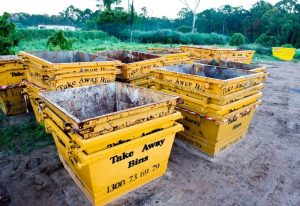Estimating Skip Bin Loads
Accurate estimation of skip bin loads is essential for effective waste management. Whether you’re tackling a home renovation, garden clean-up, or construction project, understanding how to estimate the volume of waste you need to dispose of can help you select the right skip bin size and avoid unnecessary costs. This comprehensive guide provides key insights and practical tips for estimating skip bin loads effectively.
Why Accurate Estimation Matters
Estimating skip bin loads accurately has significant implications for your project, including cost management, operational efficiency, and environmental impact. Here’s why getting it right is crucial:
Cost Management
Choosing a skip bin that’s too small can lead to additional charges for extra bins or frequent pickups. Conversely, opting for a bin that’s too large can result in unnecessary expenditure. Accurate estimation helps you select the right bin size and stay within budget.
Operational Efficiency
Efficient waste management requires proper planning. Accurate load estimation ensures that you have enough space for all your waste, reducing the need for multiple trips or additional bins and streamlining the disposal process.
Environmental Impact
Properly estimating your skip bin load minimizes the environmental impact by reducing the number of trips required for waste disposal. This helps lower carbon emissions associated with transportation and supports sustainable waste management practices.
Factors Affecting Skip Bin Load Estimation
Several factors influence the estimation of skip bin loads. Understanding these factors will help you make a more accurate assessment:
Type of Waste
The type of waste you’re dealing with can affect how much fits into a skip bin. For example, bulky items like furniture or construction debris take up more space than compact waste like paper or plastic. Consider the nature of your waste when estimating bin loads.
Volume of Waste
To estimate the volume of waste accurately, measure the dimensions of the waste pile. Use the formula for volume (length × width × height) to calculate the amount in cubic meters. This will give you a rough idea of how much space you’ll need in the skip bin.
Compaction and Compression
Waste compaction can affect how much material fits into a skip bin. Compressing or breaking down large items can create more space in the bin. However, avoid overloading the bin as it can lead to safety issues and additional costs.
Steps to Estimate Skip Bin Loads
Accurately estimating your skip bin load involves several key steps. Follow these guidelines to make an informed decision:

Estimating Skip Bin Loads
Measure Your Waste
Start by measuring the dimensions of your waste pile. Use a tape measure to determine the length, width, and height of the pile. Multiply these dimensions to calculate the volume in cubic meters.
Consider Waste Type and Density
Different types of waste have different densities. For instance, construction debris is denser and takes up less space compared to garden waste. Consider the type and density of your waste when estimating bin load.
Consult with Professionals
If you’re unsure about your estimation, consult with skip bin hire professionals. They have experience in evaluating waste volumes and can recommend the appropriate bin size based on your needs.
Tips for Effective Skip Bin Load Estimation
Here are some practical tips to help you estimate skip bin loads more effectively:
Use Online Calculators
Many skip bin providers offer online calculators to help estimate bin loads. Input your waste dimensions and type to receive an estimate of the bin size you need. These tools can provide a quick and accurate assessment.
Break Down Large Items
Disassemble large items like furniture and appliances to optimize space in the skip bin. Breaking down bulky items allows you to fit more waste into the bin and can reduce the number of bins required.
Plan for Extra Space
It’s wise to plan for a bit of extra space in your skip bin. Having a slightly larger bin than you estimate can accommodate any additional waste that might accumulate during the project.
Common Mistakes to Avoid
Avoiding common mistakes in skip bin load estimation can help prevent issues and additional costs. Here are some pitfalls to watch out for:
Underestimating Waste Volume
Underestimating the volume of waste can lead to insufficient bin capacity, resulting in additional costs for extra bins or frequent pickups. Be thorough in your measurements and consider all waste types.
Overloading the Bin
Overloading the skip bin can create safety hazards and result in additional charges. Ensure the waste level does not exceed the bin’s rim and follow the guidelines provided by your skip bin hire company.
Ignoring Waste Regulations
Different types of waste may have specific disposal regulations. Ensure that you follow all guidelines regarding prohibited items and waste types to avoid legal issues and additional fees.
Conclusion
Estimating skip bin loads accurately is essential for efficient waste management. By considering factors such as the type and volume of waste, using measurement techniques, and seeking professional advice, you can select the right skip bin size for your needs. Following these tips and avoiding common mistakes will help you manage waste effectively and keep costs under control.
For more assistance or to hire a skip bin, contact your local skip bin provider for expert advice tailored to your specific requirements.
